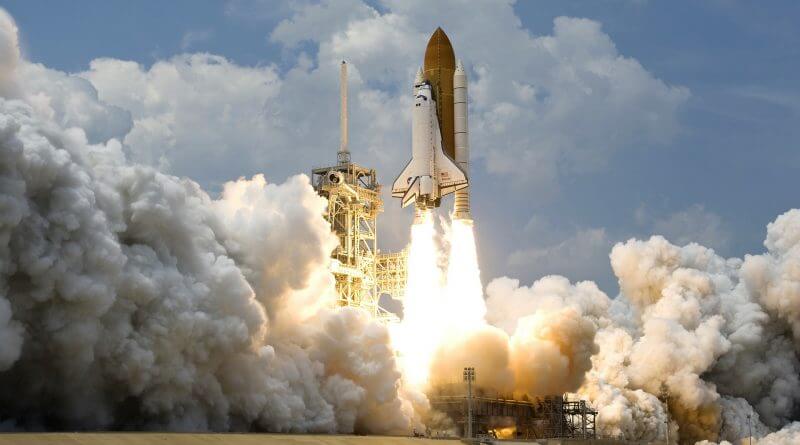How do rockets move in space? (Newton’s laws of motion)
In this article,
I will explain how rockets move in space despite there is no atmosphere.
The atmosphere of the earth is required for all flying engines like jet engines
in airplanes.
Newtonian Mechanics
The famous scientist Isaac Newton tried to find the relation between force and the acceleration of an object. He developed the three laws of motion that can describe the motion of anybody.
However, these laws of motion can’t be right if the bodies move at high speed (about a fraction of the speed of light) and also if the bodies are very small (atomic scale like electrons).
The study of the motion in these criteria is called Newtonian mechanics.
All Newton’s laws are experimentally predicted and you can’t prove these laws in any mathematical way.
Newton’s First Law
When you drive your car and want to travel at a constant speed, you should give the engine a small amount of gasoline that gives your car a constant force to prevent the car from slowing down.
In the motion on the surface of the earth, you will experience different kinds of friction (with air and street floor, etc.).
Try to imagine this simple experiment, if you try to push a ruler on your desk, it will move for a distance and then stop. But if your desk is wet, the distance of the moving rule before a stop will be increased.
What happened here is the wetness of the desk minimizes the friction between the ruler and the desk.
If there is no friction (like motion in space), the ruler will never stop.
Inertia
From Newton’s first law, an object moving with velocity will keep moving until a force applies to it. To illustrate, if you throw a ball and your friend tries to catch it, he will feel some resistance to stop it.
On the other hand, if you hit a baseball toward your friend and he tries to catch it, he will feel a strong resistance to stop that ball from moving.
This resistance is called inertia.
You can feel inertia while you ride a car. When the driver wants to decrease the speed of the car, you will feel a force try to push you toward the dashboard. That is why; you must wear a seat belt that prevents you to move toward the windshield of the car.
Newton’s first law: an object will remain in uniform motion in a straight line with no acceleration or at rest unless an external force is applied.
Newton’s Second Law
In Newton’s first law, it describes the object moving with zero net force acting on it.
but in Newton’s second law, this law describes a moving object with a net force acting on it.
If you apply force on the object (1 kilogram mass), the object will accelerate (the velocity of the object will be changed).
Newton’s second law: the acceleration (a) of the object is directly proportional to the applied net force (F) and inversely proportional to the mass (m) of the object.
$$ a=\frac{F}{m} $$
This law gives the relationship between mass, acceleration, and force.
$$ F=ma $$
From this equation, if you push an object (1-kilogram mass) with a force and this object accelerates two meters per second squared (2 m/s2), then if you push the same object with double force, the object will accelerate four meters per second squared (4 m/s2).
Newton’s Third Law
In previous laws, we discuss the behavior of the objects that move with and without applied net force.
In this law, we will show how objects interact with each other.
This law is very important to describe and design the rockets or the spacecraft to move in space. There is no other way to move in space except this principle.
Newton’s third law: if object-1 applies a force to object-2, object-2 will apply force to object-1 with the same magnitude in the opposite direction.
However, how an object can apply force to another object?
- If the object moves in velocity (v) and hits another object. This is what happens when a car accident occurs.
- If the object throws something from it. This is what happens when the rockets move in space.
- If you put a book on the desk. The book will apply force to the desk due to the weight of the book and the desk will apply force to the book in the opposite direction with the same magnitude.
Imagine that, if you put a book over the bread dough, the book will sink. The applied force by the book is bigger than the opposite direction force applied by the bread dough.
The applied force by object-1 is called the action force. And the applied force by object-2 is called the reaction force.
But how a book applies force to the desk.
To explain that, I need to define what weight is and the difference between weight and mass.
Weight
We can describe weight as the gravitational force applied to the object. The weight can be changed from one place to another. It depends on how much force is applied to the object by the gravity of the planet (for example earth).
To calculate the weight of an object, you need to know its mass and the gravity acceleration constant (g) (on earth is approximately 9.8 m/s2).
$$ F_g=mg $$
Where
Fg is the weight of the object (the gravitational force applied to the object).
m is the mass of the object.
g is the gravity acceleration constant.
Now we need to know, what is the difference between mass and weight.
To show you the difference, I will need first to show how to measure mass.
Mass
Mass is a property of an object and can be measured by comparing it with standard mass (1-kilogram mass) by using the balance scale.

From this image, the weight of object 1 is equal to (m1g) and the weight of object 2 is equal to (m2g).
As we compare two objects, the gravity acceleration constant (g) can be canceled.
From that, the mass is independent of the gravity force and can’t be changed if you move anywhere.
How do rockets move in space?
From Newton’s third law, if you throw something from an object, the object will move in the opposite direction.
This is what happened in rockets, the fuel goes out of the rocket at high speed. This makes the rocket move in the opposite direction of the fuel exit.
The fuel on the rocket doesn’t move, when the rocket burns the fuel, the gas generated has a large volume and tries to exit from the rocket at high speed.
When the gas exit from the rocket at high speed, the force is applied to the rocket in the opposite direction of the gas exit.
The force applied to the rocket depends on the mass of the gas and the speed of the gas that out from the rocket.
The amount of fuel is limited in space, therefore, the scientists developed the engine on the rocket to use plasma instead of normal burn fuel to accelerate the gas that exits from the rocket.
As we know, if we increase the velocity of the gas, the rocket will take more force.
If you are in the space and try to move, you may throw something from your hand and you will gain a force in your hand but in the opposite direction.
Conclusion
To answer this question “How do rockets move in space?” in very short sentences.
Rockets need to throw a very high-speed gas into space to move in the opposite direction.
I hope this article is useful and informative.


